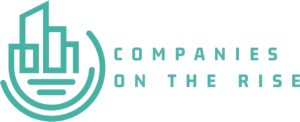Understanding the Foundations of Custom Web Design and Development
The digital presence of any business starts with a well-built website, and going the custom route ensures that the platform reflects the unique identity of the brand. Unlike template-based solutions, which often impose limitations, custom web design and development provides flexibility and full control over both design and functionality. This tailored approach allows businesses to align their online platforms with their goals, values, and target audience. A custom website is scalable, meaning it can grow alongside the company, adapting to new technologies and customer expectations. The process is centered on delivering not just aesthetics, but also usability and seamless user journeys. For businesses aiming to stand out in competitive markets, a professional custom design offers a long-term advantage. Understanding these foundations is key to appreciating the steps that follow in the process.
Initial Discovery and Research Phase
Every successful website project begins with a comprehensive discovery stage that digs deep into the client’s needs and objectives. During this time, the web design team gathers insights about the business, its products or services, and the audience it wants to reach. This phase also involves competitor research, which reveals opportunities to differentiate the client’s website from others in the industry. Identifying strengths, weaknesses, and untapped potential in competitor websites informs the creative and technical direction of the project. The team then maps out a project roadmap that defines clear deliverables and timelines. By aligning everyone’s expectations early, this stage reduces risks of miscommunication later. Without this foundational step, it becomes nearly impossible to create a website that resonates with both the business and its audience.
Crafting a Strategic Design Plan
A strong design plan is essential for transforming ideas into actionable blueprints. This stage focuses on building the information architecture, which determines how content and navigation will be structured. Designers create wireframes to visualize how users will interact with the website before adding visual elements. Mood boards and style tiles help establish the color palette, typography, and overall brand style, ensuring consistency across the digital experience. Mockups are then created to simulate how the final design will look and feel. This stage also requires close collaboration with the client to ensure that the visual identity aligns with business objectives. With a thoughtful design plan, the development process has a clear path forward, avoiding wasted time and costly revisions later.
User Experience (UX) and User Interface (UI) Design
The UX and UI design stage is where strategy transforms into engaging visuals and intuitive interactions. User experience design prioritizes navigation flow, readability, and accessibility, ensuring that visitors can easily achieve their goals on the site. A well-designed interface emphasizes clarity, balance, and consistency across all pages. Responsive design practices guarantee that the website adapts seamlessly to mobile, tablet, and desktop screens, which is critical given today’s device diversity. Accessibility is also a crucial consideration, making sure that users with disabilities can navigate and interact with the site effectively. This phase balances creativity with functionality, always keeping the end user in mind. The result is a digital environment that not only looks appealing but also performs smoothly.
Content Strategy and Development
Compelling content is the heart of any effective website. In custom web design and development, content is crafted specifically to resonate with the intended audience and align with brand messaging. Well-structured content also enhances SEO, helping the site appear in relevant search results and attracting organic traffic. This involves a mix of written copy, visual elements, videos, and animations that create an immersive experience. Storytelling plays a key role by allowing businesses to communicate their values and connect emotionally with visitors. Each page is optimized for keywords and readability, ensuring both search engines and users find value. A strong content strategy ensures that design and content work hand in hand, creating a cohesive and impactful user journey. Without tailored content, even the most beautiful design may fail to engage users meaningfully.
Technical Development and Coding Stage
Once designs and content strategies are finalized, the technical phase begins with coding the website. Front-end developers bring visuals to life by transforming wireframes and mockups into interactive interfaces that users can engage with. Back-end developers build the core functionalities, from databases to custom integrations, ensuring the site works seamlessly behind the scenes. Clean, scalable code is prioritized to allow for future updates and adaptability. A Content Management System (CMS) may be integrated to give clients the ability to manage and update their site independently. This phase also focuses heavily on security protocols, ensuring the website is protected from vulnerabilities. By blending creativity with technical expertise, this stage transforms static designs into a fully functional, dynamic website.
Integration of Features and Functionalities
Modern websites often require more than just static pages, and this is where added features come into play. Businesses may request e-commerce capabilities, booking systems, or membership portals to meet customer needs directly online. Custom plugins and third-party integrations extend the site’s capabilities, creating a tailored solution for unique requirements. Security is a top priority, especially when handling sensitive user data such as payment information. Scalability is also considered so that features can evolve alongside business growth. By carefully integrating these functionalities, developers create a platform that is both powerful and user-friendly. This stage ensures that the website is more than just an online presence—it becomes a valuable business tool.
Quality Assurance and Testing Process
Before launch, the website undergoes rigorous testing to ensure reliability and performance. Cross-browser and cross-device testing confirm that the site works consistently across different platforms. Speed and performance optimization are addressed to reduce loading times, a factor that directly influences both user satisfaction and SEO rankings. Debugging is carried out to identify and fix any functionality issues, ensuring a smooth experience for visitors. Usability testing evaluates how intuitive the website is for real users, providing valuable feedback for final refinements. Clients are also invited to review the website during this stage, allowing adjustments before the official launch. Quality assurance acts as the final safeguard, ensuring that the website performs flawlessly under real-world conditions.
Deployment and Launch Preparation
The deployment stage is where all the planning, design, and development come together. Hosting and domain settings are configured to ensure smooth accessibility for visitors worldwide. A pre-launch checklist verifies that every element—from SEO tags to design consistency—is ready. This stage also includes setting up analytics tools to track website performance once live. Communication between the design team and the client is vital to coordinate a successful rollout. Careful preparation minimizes risks and ensures that the launch feels seamless. With these measures in place, the website is primed to make a strong first impression.
Post-Launch Support and Continuous Improvement
Launching the website marks the beginning of an ongoing process of growth and refinement. Regular maintenance ensures that the platform remains secure, up-to-date, and optimized for performance. Analytics tracking provides insights into how users interact with the site, helping businesses adjust their strategies over time. As the company expands, new features and functionalities can be added to meet evolving demands. Continuous SEO optimization ensures that the site remains competitive in search rankings. Businesses benefit from a proactive approach to updates rather than waiting until issues arise. With ongoing support, a custom website becomes a long-term investment rather than a one-time project.
Common Challenges in Custom Web Design and Development
Despite its many benefits, custom web design projects are not without challenges. Balancing creative ideas with technical feasibility requires careful collaboration between designers, developers, and clients. Timeline management can be complex, especially for projects with large scopes or evolving requirements. Budget considerations often come into play, as high-quality design and development require proper investment. Another challenge lies in aligning client expectations with realistic outcomes, ensuring the final product meets both vision and practicality. Communication is key to overcoming these hurdles and maintaining transparency throughout the process. By addressing these challenges early, teams can reduce risks and keep projects on track. Ultimately, overcoming obstacles strengthens the outcome and delivers a more refined result.
Frequently Asked Questions
1. How long does custom web design and development typically take?
The timeline can vary from a few weeks to several months, depending on project complexity and requested features. A simple informational site may take 6–8 weeks, while large-scale platforms may take 4–6 months.
2. What’s the difference between a custom-built website and a template-based one?
A custom-built website is created from scratch, tailored to specific needs, while a template is pre-designed and offers limited flexibility. Custom sites provide scalability, brand alignment, and unique functionality.
3. How much does professional custom web design usually cost?
Pricing depends on complexity, features, and team expertise. Costs can range from a few thousand dollars for small businesses to tens of thousands for enterprise-level solutions.
4. Do I need a CMS for a custom website?
A CMS is not mandatory, but it is highly recommended if the client wants control over content updates without relying on developers. Popular options include WordPress, Drupal, or custom-built systems.
5. How often should a custom website be updated or redesigned?
Websites typically benefit from a refresh every 2–3 years to keep up with design trends, security updates, and technological advancements. Regular maintenance in between ensures peak performance.










